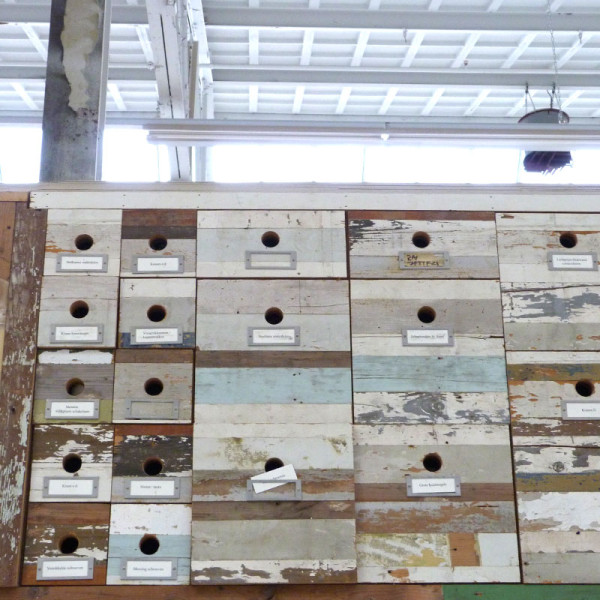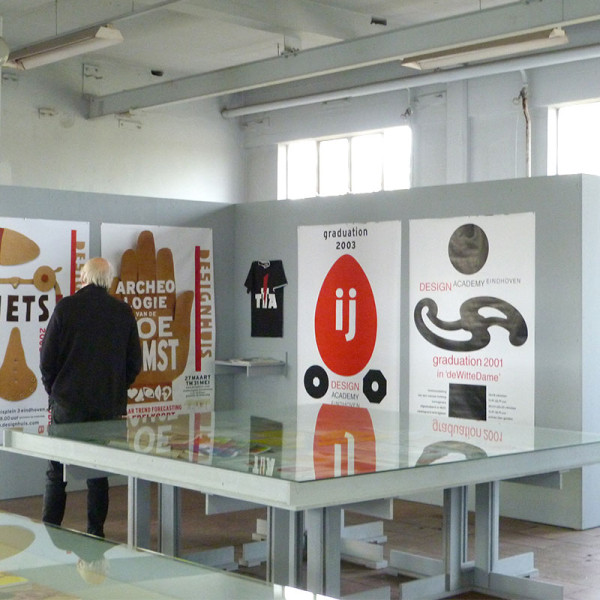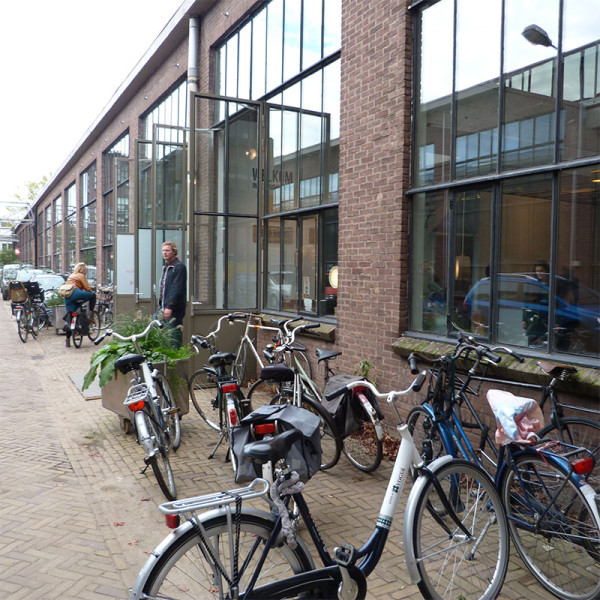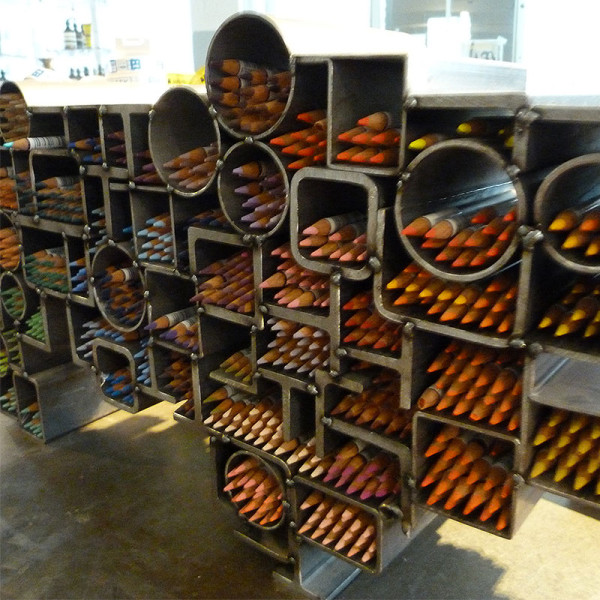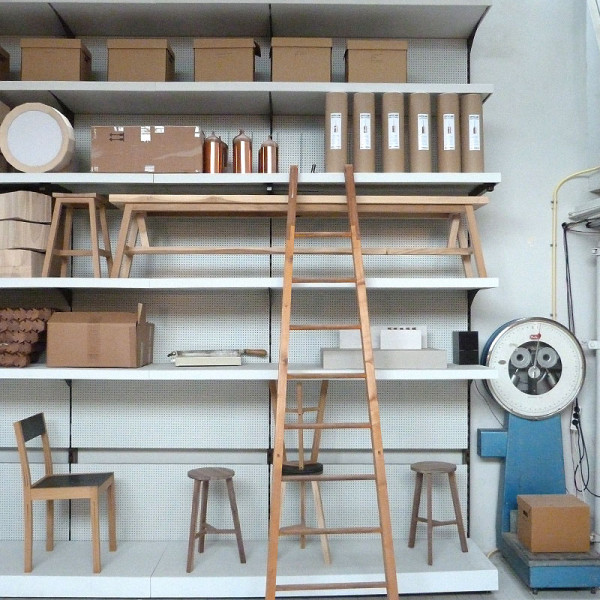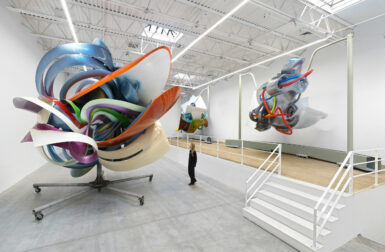Visiting Piet Hein Eek’s space was one of the most inspiring parts of my trip to Eindhoven for Dutch Design Week. In his final exam, Piet wrote: “If you want to function successfully and design beautiful objects, you need to make sure that your environment is a stimulating one and that you feel like a fish in water.” He said that creating this type of environment, your daily reality, is much more important than setting all kinds of goals for the future.
It might have come about more by luck than planning, but he’s done just that. He bought the collection of buildings three years ago, despite the fact it was 4000m2 bigger than he has intended, because it was the only space he could find where the workshop could be right at the heart of the business.
Piet describes his space: “It’s got a bit out of hand really – everything we wanted to do a little bit, we’ve started doing a lot! It started because we found that dealers would only buy what they already sell, so if we make something new they don’t want it, so we thought we would create our own world and sell our own products. But then we thought if people drive for two hours to get here, we need to have more context than only our own stuff, so our little shop became a two-floor concept store. We have a restaurant so they can have some lunch. We have a huge art gallery upstairs. The showroom is vast. We have five studios we rent to new designers, all kinds of people making things. We have an events space… all because of this building.”
“In the end, we might conclude that if we had done it smaller it wouldn’t have been as good as it is now, because we really have the possibility of creating the context we wanted – all’s well that ends well, but it was a coincidence. The size was not important.”
“The only thing we try to do is to have things that don’t fit – to have chaos, to have variety, to experience new things. We just try everything out and we never know what works, but we find out what works, so it’s very experimental. It’s always a coincidence, but that’s quite nice – it’s the context we were looking for.”
“During the week when the workshop is open, that’s the best time. The noise, and the smell… then the concept is complete. You can see the products being made on the other side of the window. That’s the fun.”
“The new collection is Waste Waste 40 40. I designed it because we still have waste even from the Waste tables! There are always very small pieces of wood, which you don’t use.”
“The 40 40 makes the blocks of 40 40 as the starting point for the design. The sizes and dimensions are always 40, 80, 120, etc, so we use the leftovers from the canteen tables. We never make two the same.”
Piet Hein Eek is one of life’s rare can-do people. His energy and drive have time and time again turned problems into opportunities. His generosity and collaborative nature have drawn an exciting group of creative people to him. He’s a really inspiring man, who’s built a really inspiring world around him that people just want to be a part of.
Our trip to Eindhoven was supported by Airbnb.com.

















